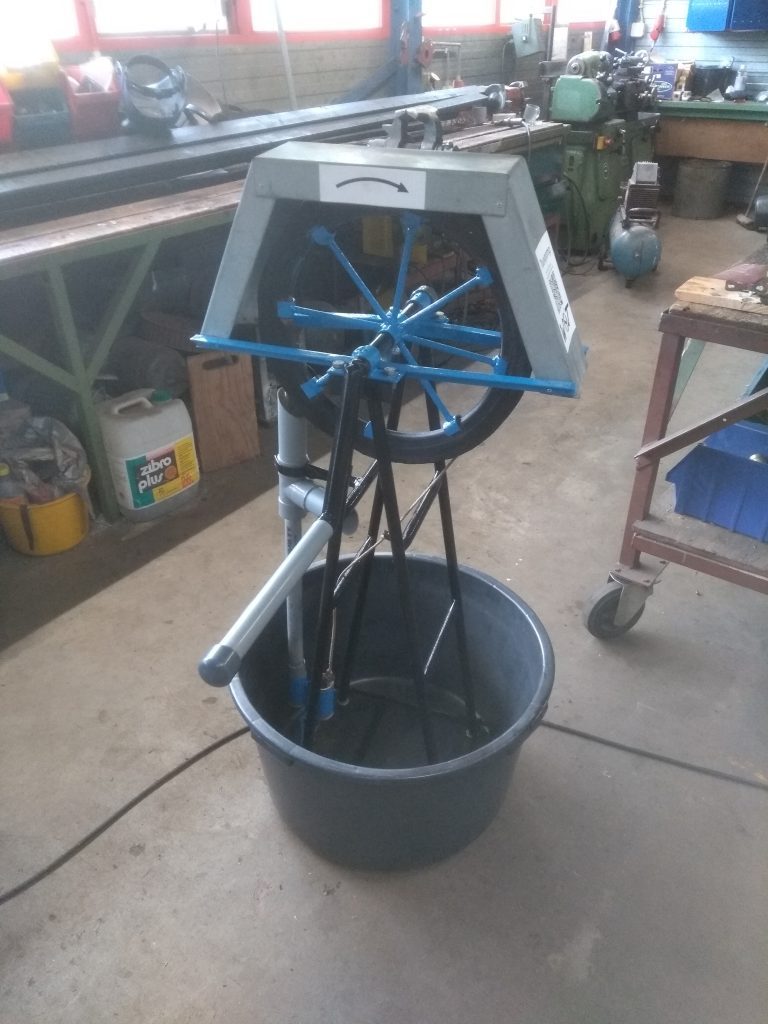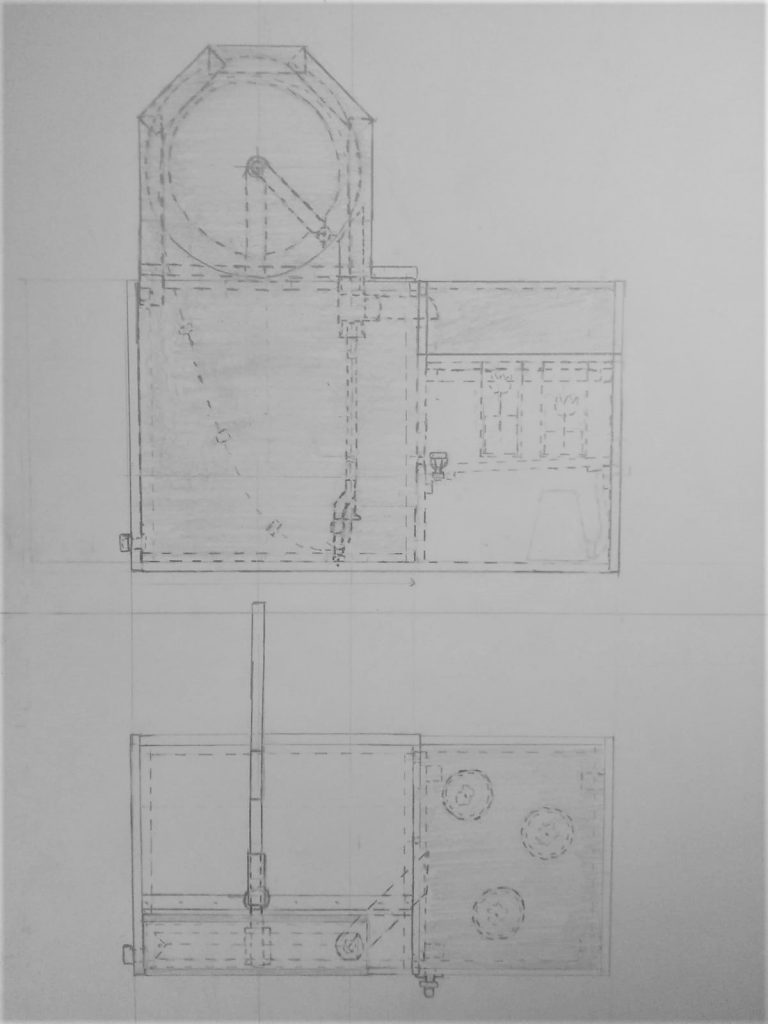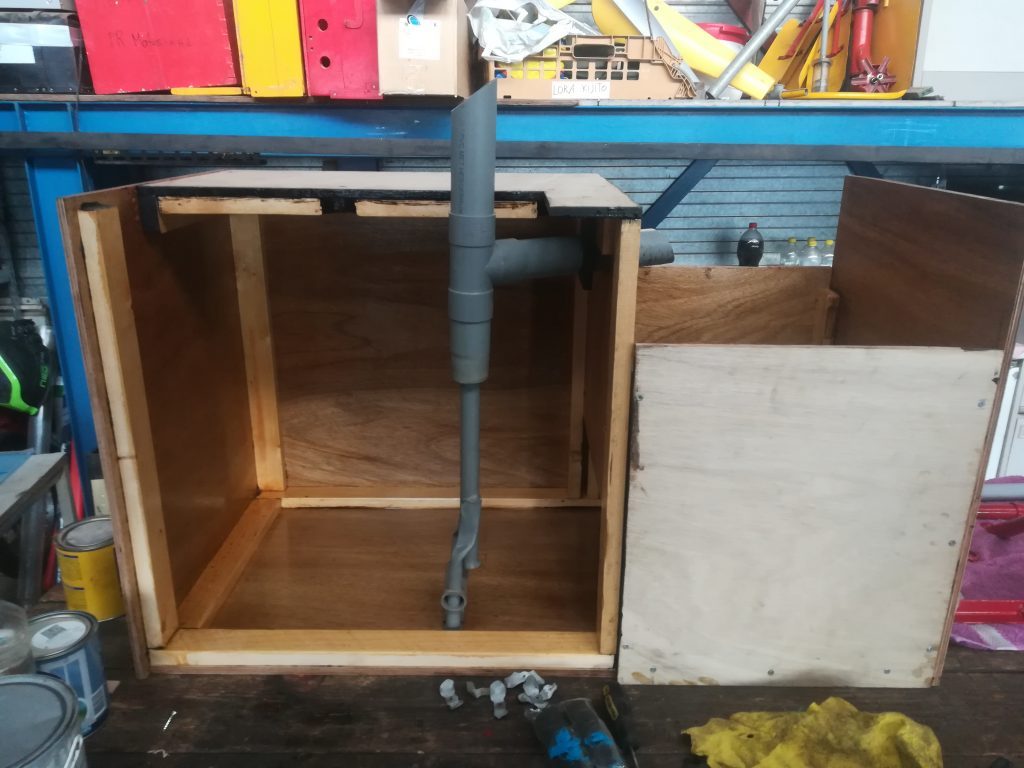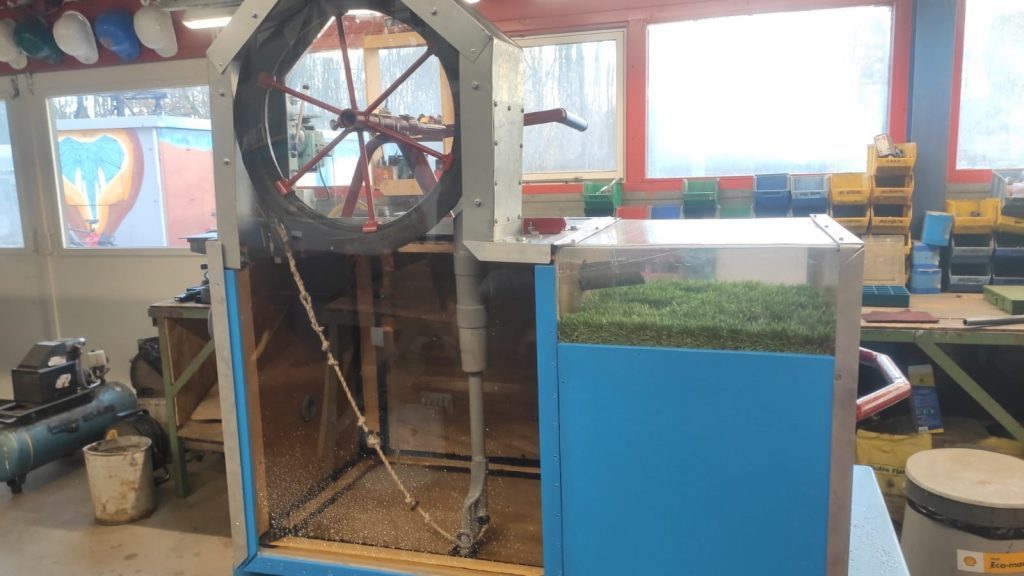At the beginning of 2019, a request came in from Maarten Rijgersberg, IN KNOWLEDGE / ExpositionRent, a company that rents interactive exhibitions in the field of environment and nature. They were interested in a model made in the past by WOTters in which a rope pump pumped water to another container so that fake flowers slowly floated upwards. They also wanted a normal demonstration model of a rope pump. A model in a mortar tub has been refurbished and repainted. The flower rope pump no longer existed and it was decided to rebuild it. The flower rope pump demonstrates two things: 1. The operation of the rope pump, a very cost-effective pump used a lot in developing areas. At the WOT we have a lot of experience with this type of pump. Read more about it here. 2. The call for more biodiversity through planting more plants is increasing worldwide. Decreasing the amount of pavement in gardens and public spaces is a must, considering the dramatic decline of insect life around the world. According to this study by Radboud University in 2017, there has been a two thirds decrease in the insect life in the past 27 years. Partly with the flower pump rope pump, ExpositionRent, together with other demonstration objects and exhibition materials, wants to direct people to greening gardens and thus stimulating life. The Flower Box Rope Pump can be rented for Festivals & Events, Municipalities, Environmental Education Centers, Visitor Centers and Museums. via the website of ExpositionRent.

First, a plan was drawn and the design was carefully considered. The model would have the same principle as the previous version, but would be more robust. Due to regulations, it was important that the pump would be child-friendly and that no one could lose their fingers. The entire box would be closed with a number of parts made of transparent plastic so that people could look inside. When the plan seemed comprehensive (that was of course not the case), construction started.

A large sheet of plywood was bought along with a sheet of plastic and a pot of rubber seal. The plate was cut into the correct pieces based on the drawings. This has resulted in a lot of puzzle work and despite the fact that (as usual) something has been cut wrong, everything ended up quite well at this point. Work was also carried out on the PVC parts and steelwork. Furthermore, the flowers had to be made. The plastic rubish from the store turned out to be too fragile. That is why the flowers are made of sheet steel with styrofoam floats.

The box slowly but surely took shape. The wood was covered with a large number of layers of yacht varnish and the metalwork was painted. The outside of the box was also painted and the plastic cut to size. At some point it was time to do the first test with water. The workshop was temporarily transformed into a swimming pool. There were leaks at seams between the wooden plates and at the connection between wood and plastic. More sealant and rubber seal seemed to partially solve the problem. However, accessibility for maintenance proved to be a difficult problem. In order to be able to enter the tank, the top had to be able to come off, so it was not possible to seal everything shut. After the workshop floor already had to endure a lot of moisture, the majority of the leaks have been fixed. When pumping, however, water still splashes around in the top part of the container and some water will leak.
During the work, most of the plastic has been replaced, it has been discovered that silicone sealant that has expired does not harden, that children have to pump very hard to get flowers up and much more. But in the end the model was finished. The container was delivered about ten months after the request. A project that took longer than expected and was more complicated than initially planned, but very educational. And it is of course very nice that a WOT production is now part of an exhibition. Perhaps more models will follow in the future.

